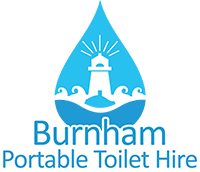Burnham Portable Toilet Hire is a family business established in 1992, successfully running for over 28 years. In this time we have supported the green evolution of portable toilets, welfare pods, hot showers and stand alone hot wash stations. Our clients range from construction sites, to large scale building projects, outdoor garden events, rural weddings, music festivals, down to single unit hire for domestic use (house refurbishment, for example) and private parties.
Eco friendly solar powered portable toilet hire in the South West UK
Our service area spans south Bristol and along the M5 corridor, down to Exeter, South Somerset and Devon. Over the years we have nurtured a small army of regular clients who love our attention to detail and personal, professional service. From Bedminster to Portishead, through Clevedon, Yatton, Weston-super-Mare, Burnham on sea, Bridgwater, Taunton, Exeter and Devon.
The 2010s marked a shift towards luxury and sustainability in portable sanitation. High-end models featured running water, flushing toilets, mirrors, and lighting, offering a welcoming experience for users. We feel that this was the decade when the waste management industry began to focus on sustainability, with eco-friendly materials and waste treatment processes becoming standard. Composting toilets and low-water-use models gained popularity, reflecting a growing environmental consciousness and an eco friendly, sustainable focus.
Solar-Powered Toilets – Sustainable sanitation and servicing solutions
In the 2020s, the integration of solar power revolutionised portable toilets, this is where solar panels provide energy for lighting, ventilation, and even flushing mechanisms, making these units self-sufficient and reducing their environmental impact. These solar-powered toilets are not only used at events but also in remote locations where traditional infrastructure is unavailable – meaning there’s no power source.
Additionally, modern portable sanitation solutions from Burnham Portable Toilet Hire now include showering and washing facilities, providing comprehensive hygiene solutions. These units are particularly valuable in disaster relief scenarios and remote work sites, where maintaining hygiene is crucial.
We aren’t merely a contender in the industry, we are thought leaders and environmentally aware of how the planet is heating up. We ensure we are perpetually pushing boundaries, and our latest acquisition of state-of-the-art, 2024-model solar-powered portable toilets underscores our continued commitment. These aren’t your typical portable loos; they’re powered by solar energy, making them a shining example of eco-friendly waste management.
“We’re incredibly excited to be the first company in the area to offer these solar-powered toilets,” says Jackie Richards, co-founder of Burnham Portable Toilet Hire. “It’s a fantastic way for us to reduce our environmental impact and demonstrate our dedication to sustainability.”
Solar panel powered units – servicing and maintenance
Maintaining modern solar-powered portable toilets for maximum efficiency involves several key tasks, ensuring both the solar power system and the sanitation facilities remain in optimal condition. Here’s a detailed breakdown of the maintenance tasks and their frequency:
- Cleaning Solar Panels (Monthly)
- We remove dirt, dust, and debris from the solar panels to ensure maximum sunlight absorption.
- At least once a month, or more frequently in dusty or heavily polluted areas.
- Just water and a soft cloth/brush with non-abrasive bristles, we never use harsh chemicals that might damage the solar panels.
As part of the servicing, we check for any physical damage, cracks, or obstructions on the panels every time the units come back to our yard. Our wonderful team also inspect wiring connections and mounting brackets for signs of wear and tear.
Battery Maintenance
- Checking Battery Health (Monthly)
Our servicing team monitors each battery charge and discharge cycles to ensure they are functioning correctly. This is with a multimeter – a dedicated battery monitoring system – to check voltage levels and ensure they are within the manufacturer’s recommended range.
- Battery Replacement (Every 3-5 Years)
- Task: Replace batteries that are no longer holding a charge effectively.
- Frequency: Every 3 to 5 years, depending on the battery type and usage.
- Details: Use batteries recommended by the toilet manufacturer to ensure compatibility and performance.
Sanitation System Maintenance
- Waste Removal and Tank Cleaning (Weekly to Bi-Weekly)
- Task: Empty waste tanks and thoroughly clean them to prevent odors and health hazards.
- Frequency: Weekly or bi-weekly, depending on usage levels.
- Details: Use appropriate waste treatment chemicals and high-pressure water jets for cleaning. Ensure all waste is disposed of according to local regulations.
- Chemical Replenishment (Weekly)
- Task: Refill the toilet with the necessary chemicals to break down waste and control odors.
- Frequency: Weekly.
- Details: Follow the manufacturer’s guidelines on the type and amount of chemicals to use.
- Ventilation System Check (Monthly)
- Task: Ensure the ventilation system is working properly to keep the interior odor-free.
- Frequency: Monthly.
- Details: Clean air filters and check fans or vents for blockages.
Structural Maintenance
- Inspecting and Repairing Structural Components (Monthly)
- Task: Check for any structural damage to the toilet unit, including cracks, leaks, or loose fittings.
- Frequency: Monthly.
- Details: Repair or replace damaged components promptly to maintain the integrity of the unit.
- Door and Lock Maintenance (Monthly)
- Task: Ensure doors and locks are functioning smoothly to maintain security and usability.
- Frequency: Monthly.
- Details: Lubricate hinges and locks and replace any broken parts.
General Cleanliness
- Interior Cleaning (Daily to Weekly)
- Task: Clean the interior surfaces, including the toilet seat, floor, and walls.
- Frequency: Daily for high-usage units, weekly for lower-usage units.
- Details: Use disinfectants and cleaning agents that are safe for the materials used in the toilet.
Documentation and Monitoring
- Maintenance Log (Ongoing)
- Task: Keep a detailed log of all maintenance activities performed.
- Frequency: Ongoing.
- Details: Record dates, tasks performed, and any issues identified to track the condition of the toilets and schedule future maintenance efficiently.



